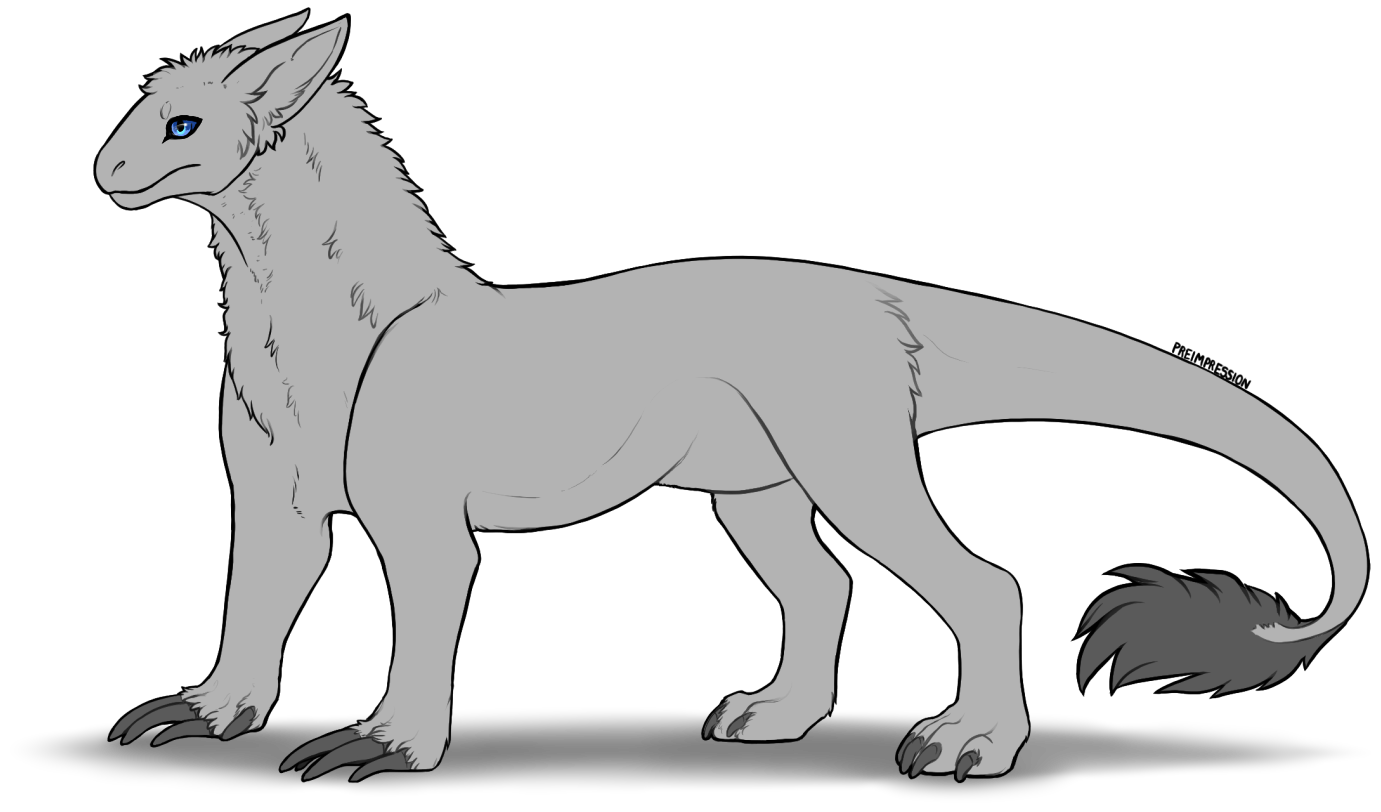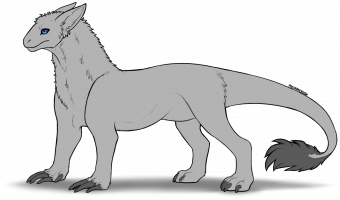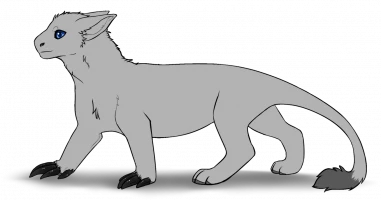The species known as Belemoid are a reclusive quadrupedal race that was discovered long after the first encounter with Tsabhua. They live in underground tunnel networks in family units called mobs which often contain several generations of similarly tempered beasts. They are a medium sized species yet still far large enough to be ridden or pose a threat to a human, if they feel threatened. They have savage claws which they use to dig and defend themselves. The plural of belemoid is, and has always been, belemoid, though their common moniker is "bele" and "beles", where the plural form is acceptable.
The belemoid species was created by Alue and Uri as a standalone ARPG.
Base Coat Colours
- monochrome
- strong
- softmix
- hardmix
Different species on Xiunus have different colour palletes and different names for those colours.
For instance, a Tsabhua's "silver" is a Belemoid's "granite".
Markings should generally be based on the palette of the base coat, except for in the case of the monochrome bases (black, silver, and white in each species's own terms), where some fall under the "monochromatic exception," meaning they can use other bases. Read individual marking guides to see more information.










































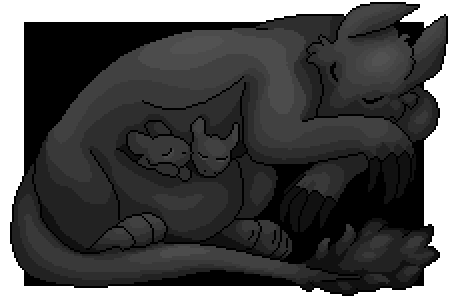 Anatomy: Sexual Dimorphism
Anatomy: Sexual Dimorphism
Both sexes have forward-facing pouches where they share the responsibility of raising their joeys.
It can be difficult to distinguish between male and female belemoid without a closer examination, as their genitalia are hidden inside their cloaca.
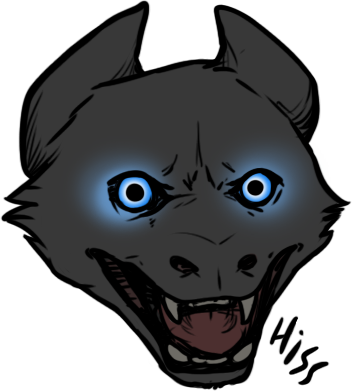 Anatomy: Bioluminescent Eyes
Anatomy: Bioluminescent Eyes
A belemoid's eyes have a natural bioluminescent glow the same colour as their irises that can be intensified on command. Small mobs often appoint "dark-eyed" friends as lookouts and guides when stealth is necessary.
Belemoid tail tufts must be darker than the fur they're touching unless optionally covered by a marking that covers them, such as underbelly or point.
If a belemoid does not have a tuft, for instance if they are of the Reef subspecies, this darkened area is not required.
The belemoid is a versatile omnivore that feeds on insects, fruit, and nuts. They use their long claws to dig up rotten logs and search for worms in the earth. They may also use their claws to pull insects out of holes in rotten plants. With their long, sloping bodies, broad rib cages, and strong shoulders, belemoid are well-equipped for digging and foraging. They also have a long, powerful tail that helps them maintain balance, as well as four sturdy legs that allow them to exhibit great strength.
The highly social belemoid  often form large groups of related and unrelated individuals, leading to their quick adaptation to colony life. They typically live in vast underground networks that they dig out from scratch, which makes them less of a burden on colonies with limited territory. However, in regions with looser soil, such as the sandy Issiq desert, they may choose to live aboveground with the larger tsabhua.
often form large groups of related and unrelated individuals, leading to their quick adaptation to colony life. They typically live in vast underground networks that they dig out from scratch, which makes them less of a burden on colonies with limited territory. However, in regions with looser soil, such as the sandy Issiq desert, they may choose to live aboveground with the larger tsabhua.
When threatened, belemoid behave similarly to cats, puffing themselves up, rearing their backs, and hissing to appear as large as possible. A male belemoid is called a boar, a female is called a mare, and their young are called joeys.
After a gestation period of four months, females usually give birth to one to four joeys. The joeys remain close to their parents and wean between four and eight months of age. At nine to ten years old, they reach sexual maturity and often set out in search of mates. If their parents permit, they may bring home mates to strengthen and grow their group.
Like most other playable species, belemoid have their own colour patterns that are unique to their breed.
They also have unique markings: badger and the Irish complex, which is made up of Irish spotting and Seychellois.
The parts of their mane that must be darker than the base coat without the flaxen gene is their tail tuft, or mutation-applied pieces such as mohawk or mane.
Subspecies
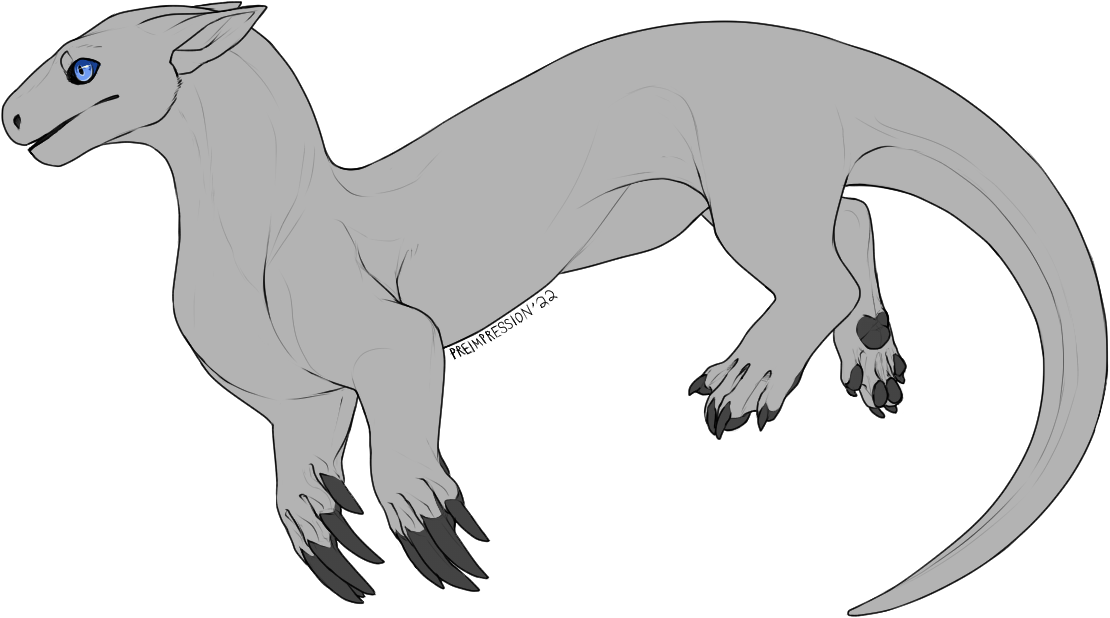
Reef Belemoid
Reef Belemoid are a subspecies of belemoid who live primarily aquatic lives. They often are found on the beachfront or ocean colonies and rarely live on land. You can almost never find a reef belemoid in desert or dry regions, unless they're staying in a lake or other water source. Young reef belemoid are very fluffy all over and are raised similarly to otters, floating on very fluffed out coats while their mothers go in search of fish or other prey. While belemoid and other subspecies are more land-driven and dig, the claws of the reef belemoid are more often used to gut larger river and ocean fish and carve out homes among rocks and reefs. They often are found in the wild among the coral reefs or deep underwater, in places even DPIP has yet to visit.
